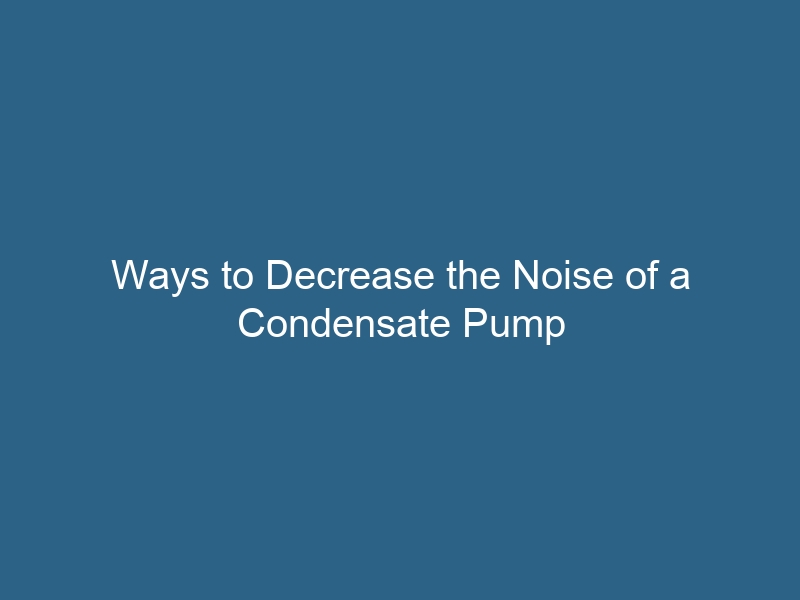Quck answer
Condensate pumps are commonly used in HVAC systems to remove condensation. However, they can be noisy and cause disturbances. Here are some ways to reduce the noise of a condensate pump:
1. Insulate the pump: Wrap the pump with soundproofing materials, such as foam or rubber, to absorb the noise.
2. Install anti-vibration pads: Place anti-vibration pads under the pump to minimize the vibrations that contribute to the noise.
3. Use a noise enclosure: Consider installing a noise enclosure around the pump to contain the sound.
4. Check for loose parts: Ensure that all parts of the pump are properly tightened to prevent rattling noises.
5. Regular maintenance: Keep the condensate pump clean and well-maintained to prevent any mechanical issues that may cause increased noise.
By following these steps, you can effectively reduce the noise produced by a condensate pump and create a more peaceful and comfortable environment.
A condensate pump can be found in any device that needs to remove moisture from the air and turn it into liquid. This liquid can either be collected and removed, like a dehumidifier does, or it can be recycled and used in the machine’s function, such as in cooling systems. Condensate pumps are often very noisy due to the high speed of the liquid and the hydraulic action. Depending on the size, location, and noise level of the pump, there are several steps that can be taken to reduce the noise. These steps may include changing the insulation between the floors of the building, reducing the speed of the liquid flow, or adding rubber buffers.
Step 1
To prevent sound vibrations from spreading to other rooms, add an additional layer of insulation between the pump and the walls of the room. Place a thick foam padding under the pump and line the walls with soundproof panels or fiberglass insulation. If the pump is small, about 1 foot by 1 foot in size, a mouse pad can be used as a floor insulation.
Step 2
Check and tighten any bolts on the pump and the pipe system connected to the pump to minimize rattling. If the pipes are lightly hitting the walls, wrap them in foam.
Step 3
Inspect the pump and pipe system for any holes that may allow air flow, causing pulsations in the pump’s action. Repair any holes and replace any necessary pipes to ensure that no excess air is entering the system.
Step 4
Clean or replace the filter of the pump. Debris in the water can make the pump work harder to push the flow past the filter.
Step 5
Reduce the speed of the water flow in the pipe, as long as it doesn’t affect the efficiency of the system. Consult the owner’s manual or a technical expert to determine the optimal flow rate for the pump you are using.
Step 6
Add a reflection silencer to the pump system. This mechanism cancels out the sound waves produced by the machine by creating an out-of-sync sound wave.


